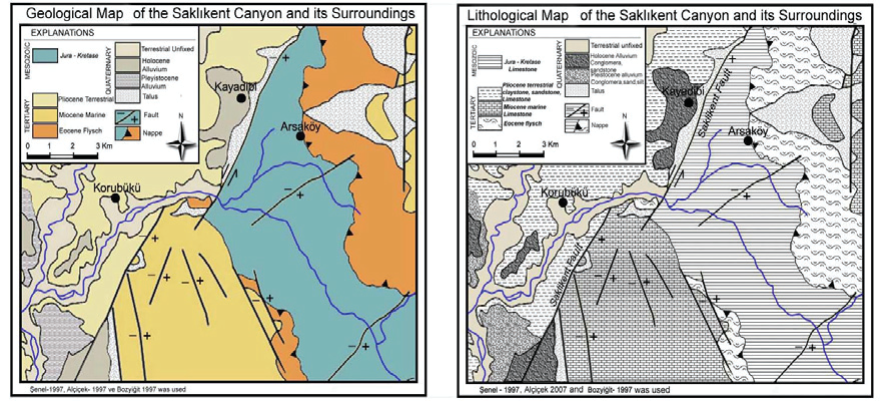by David R. Bridgland
Good morning everyone
Lots of interest today, with gravel at least visible out of the bus window. The Saklikent gorge is the highlight for those interested in drainage and landscape evolution and so I’ll concentrate on that. But first, do notice again the variety of building stones used at Xanthos, with some of the ‘showiest’ again thought to be shipped in from afar.
The Saklikent gorge is another example of evidence from this region of active epeirogenic (regional) uplift, over and above the continuing tectonic activity that is also apparent. As I noted before, the cutting of gorges is the fluvial response to this uplift where they flow over (and eventually through) resistant rocks. The main rock seen here is a Jurassic limestone, which explains the springs in the gorge sides. In karstic regions underground drainage can have a role in gorge formation (caverns can collapse to form gorges) but essentially rivers must always flow downhill to their base level (usually the sea), which is as true for underground rivers as for surface ones.

Gorges are thus a result of fluvial response to uplift but their formation cannot be dated as readily as that other response to the same thing: river terraces. The latter will have formed in areas where rivers could migrate laterally and their varied activities (e.g. alternating erosion and deposition in response to climatic and hydrological changes) have left their mark in the form of flights of terraces. These terraces, assuming that they carry fluvial sediments, can be dated by various means (and to variable degrees in different places) and can thus provide a timescale for gorge formation nearby, within particular regions, where base-level controls are the same. Again I refer you to that 2014 PGA paper. Here at Saklikent the stream issuing from the gorge is a tributary of the wonderful gravel-bed River Eşen, which occupies a wider valley with clear evidence that terraces exist. Although we have made that observation during previous visits we have yet to get round to studying these terraces, which might offer a chance for enhanced dating of the formation of the gorge. Maybe next time we come? For now I can attach a Turkish paper on the gorge (from 2011), which covers all aspects of its interest, including its tourist value. See HERE.
I will also send a few of my pictures from previous versions of today.
Another great lunch in store – and I am a big fan of Muzzy’s Place.
All best